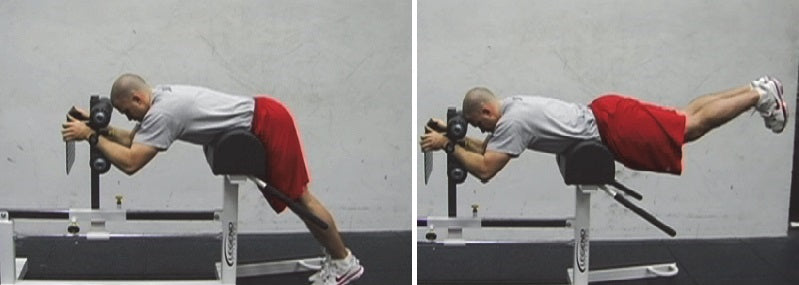Exercise Anatomy
Reverse Back Raise
An effective variant of the back raise exercise that I developed back in the 1980s, is the reverse back raise. This exercise is the opposite of the back raise, just as the reverse sit-up is the
opposite of the sit-up. It is best suited for people who cannot hang upside down, and to provide variety.

Major Muscles and Actions Involved
In the reverse back raise the erector spinae muscle of the lower back is involved in spinal extension-hyperextension. In this action you raise your hips and legs (leg-hip unit) from a down hanging position up to the horizontal or slightly above level position. The axis of rotation is in the waist.

Sports Uses
The erector spinae muscle is very important in most sports, even though it may not directly participate in moving the spine in extension or hyperextension. It must be strong enough to hold the vertebrae (spine) in place and rigid when you execute many skills, especially those involved in lifting. For example, the erectors are most important in keeping the spine in lordosis during the squat, good morning, and deadlift exercises.
Exercise Analysis
- For proper execution it is important that you hold on tightly with your hands to hold your upper body in place. By holding your upper trunk in place, you can isolate the action of the erector spinae when raising your pelvis and legs as a unit.
- It is important that you position yourself correctly so that your hips hang over the rounded seat. If you position yourself with your hips directly on top of the seat with only your legs hanging over, you will be working mainly the gluteus maximus and hamstrings in hip joint extension. The erector spinae would not come into play until you raise your legs higher than the horizontal position.
- If a GHB machine is not available you can do this exercise on a hyperextension machine but only if properly positioned. On
most machines this is not possible so you should use caution when using one. Execution should be the same as described above. - For further analysis check out our premium Kinesiology of Exercise EBooks.
